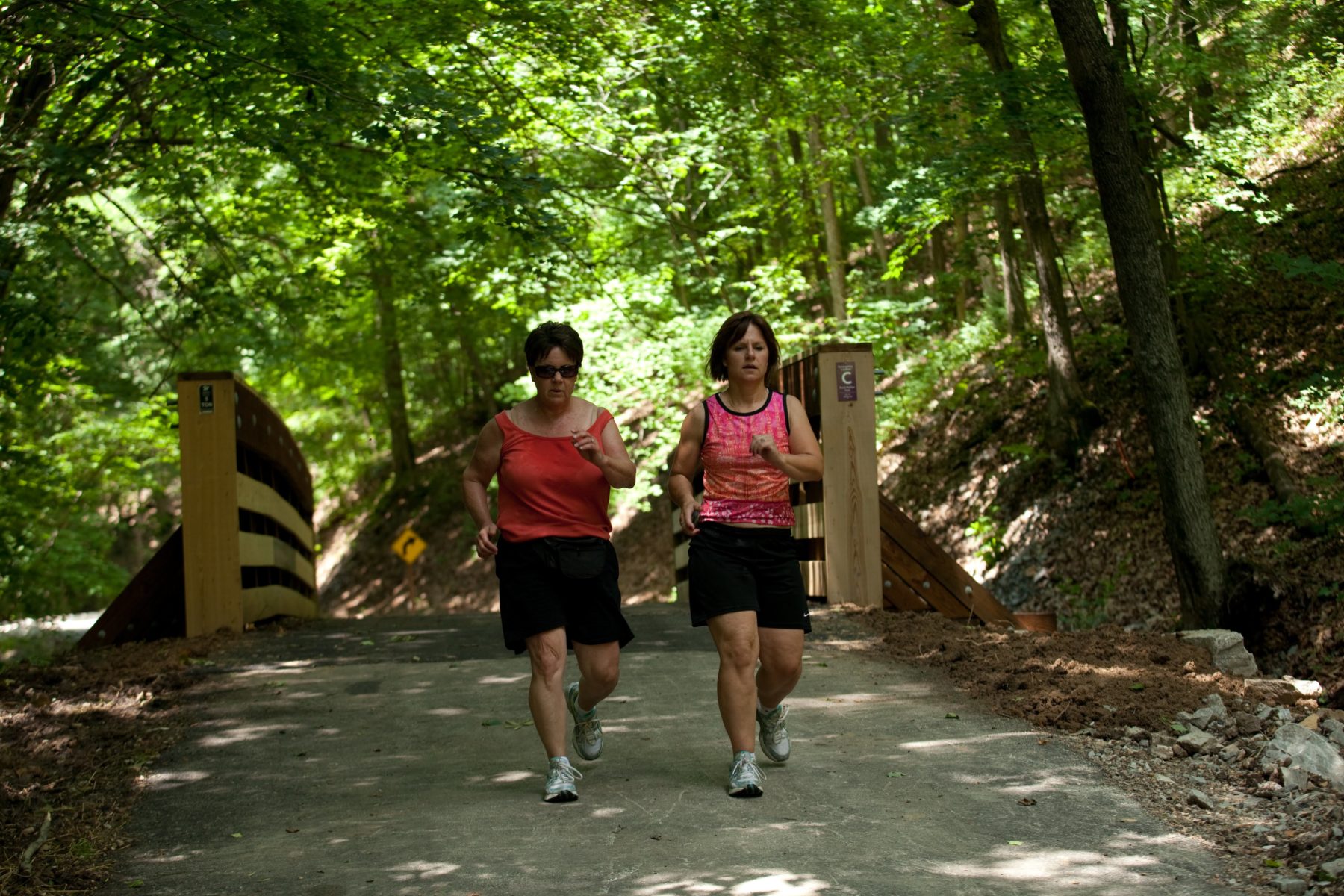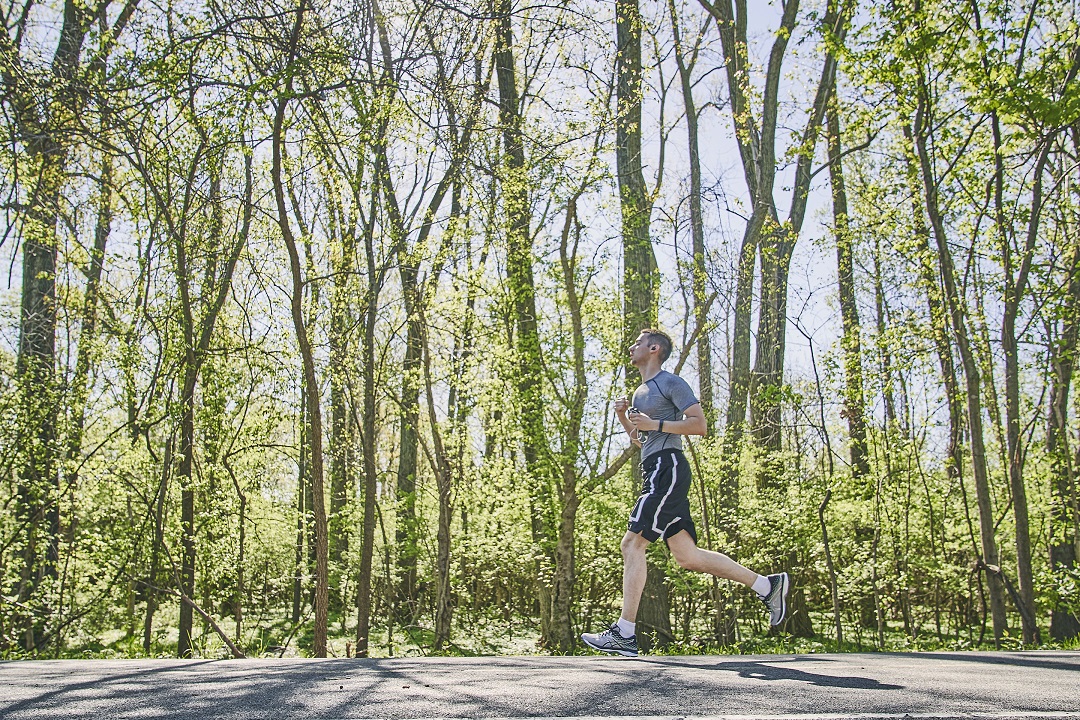In 2010, I got smoked 100 yards from the finish line of a 10-mile race. By a walker.
Actually, that’s neither accurate nor fair. The “walker” alternated between running and walking, and she and I had been leapfrogging each other for four miles. Also, to label her a walker discredits her athleticism and pacing prowess. She crushed it — and me.
I hobbled away from the finish line with a bruised ego. What was I even doing out there? Why run at all just to get passed at the finish by someone who’s walking?
That race, plus a subsequent decade of fitness experience, made me realize that the choice between running and walking isn’t always cut and dry. The reality is, are both great for health and fitness. Both improve heart health, increase bone density, burn calories, challenge your balance, and boost blood flow to the brain — helping you to feel more alert, creative, and mentally sharp.
In some cases, walking might even get you to the finish line faster than running.
Ultimately, the decision to run or walk comes down to your goals, your experience, and your preferences — among other factors. Here’s how to choose between the two.
Best for the Injury Prone
Predisposed to creaky joints? Walking is your best bet, especially if you’re just getting started. Studies show that runners are more susceptible to injury, due in part to impact on the joints.
“When you run, your body has to manage forces two to four times your body weight imparted to your joints, whereas walking is closer to one to two times your body weight,” said Ann Crowe, PT, DPT, MS, board certified Orthopedic Clinical Specialist and owner of Precision Physical Therapy in Clayton, Missouri.
That’s not to say you can’t run if you’re worried about your knees and ankles, but you’ll need to ease into it slowly to build up tolerance. Form is also important for both runners and walkers.
“Whether walking or running, we see increased forces and rotational movements at the joints when we take long strides,” Crowe said. “Many runners are already aware that running with a long stride and ‘low cadence’ is harder on their joints, but it surprises many walkers to learn that a long stride is also not ideal. You should avoid lengthening your stride intentionally. That causes a lot of unnecessary injuries.”
In addition to watching form and starting slow, there are a few other precautions you can take to lower the odds of injury. These include increasing your total distance by no more than 30 percent each week, choosing proper footwear, and maintaining a healthy body weight.

Walking (or walk breaks if you’re running) can keep fatigue from sabotaging your outing. (Great Rivers Greenway)
Best for Weight Loss
Weight loss occurs when you consistently burn more calories than you eat. Since running and walking burn calories, both can promote weight loss. Case in point: In a 2017 study that followed more than 47,000 runners and walkers for 6.5 years, both groups lost weight.
That said, runners in the study lost 90 percent more weight than walkers — even with the same amount of exercise. This likely comes down to intensity, as athletes who can sustain faster speeds for longer periods of time burn more calories during exercise.
Keep in mind that anyone can gain weight if they eat too much. It’s common for new runners to experience “runger” (running-induced hunger) and to overcompensate for calories burned during hard workouts.
A registered dietitian can help you with a plan that fuels your workouts while still creating a calorie deficit if you want to lose weight.
Best if You Want to PR
Setting a new personal record (PR) means going faster than you’ve ever gone. Running helps, but it’s not the end all be all.
As devotees of a strategy called the Galloway Method know, walking can actually help shave some minutes off your time.
“The Galloway Method is a run strategy that promotes implementing short walk breaks strategically during your run, from the very beginning,” said Scott Wolosyk, Certified Galloway Run Walk Run Coach, Program Director for the St. Louis Galloway Group Training Program, and owner of Honey Badger Run Company in St. Louis.
Walk breaks can help keep fatigue from physically and mentally sabotaging your run. In this way, walking can actually help you finish faster.
“The data that [Galloway] has collected over the years shows that a runner, paired with their proper run:walk ratio, can shave up to 7 minutes off their half-marathon time and 15 minutes off their marathon time,” Wolosyk said.
Want to see if Galloway is for you? An easy way to do that is to try what Galloway calls the “huff and puff” method during a low-stakes workout. Simply start walking when you get winded, then go back to running as soon as your breath slows down.
Best Overall
With all this in mind, is there a clear winner between running and walking? From a health and fitness standpoint, your best bet is to choose the one that you enjoy the most and that you’ll do consistently.
As for me, I’ve learned to run when I feel up for it and walk when I need to, and I’m better for it. In fact, don’t be surprised if you see me walk right past you during a race.
Author: Kim Yawitz is a regular contributor to Terrain Magazine.
Images: Courtesy Great Rivers Greenway.


Very interesting. I was told to interchange walking a short distance and run a short distance,and keep on exchanging.